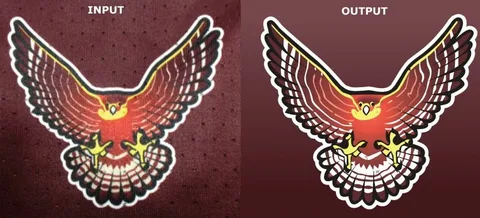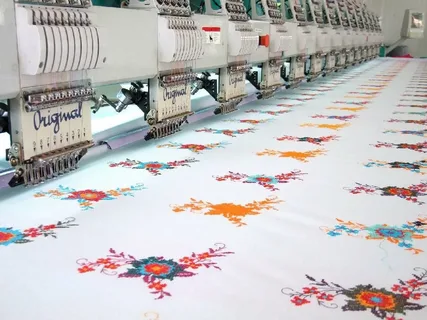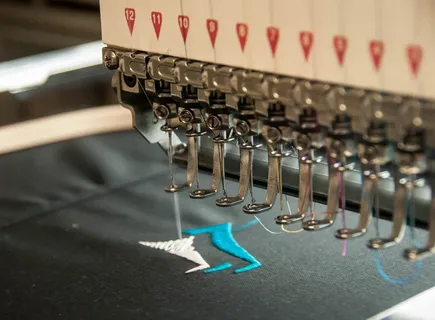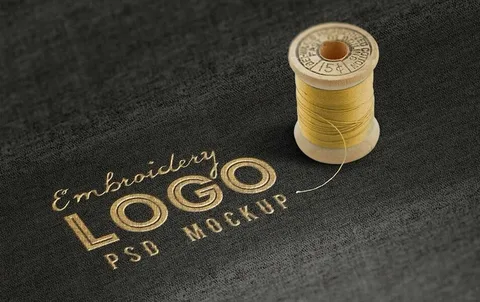
In today’s competitive market, your brand scenes can make or break your business. Whether it is your company logo on a T-shirt, a promotional design on a banner, or goods, your artwork printed on quality matters. Customers are in a hurry to notice blurred, pixelated graphics, and this can reduce their trust in your brand. Where vector art conversion services steps. They take your low-resolution design (such as JPEG, PNG, or scanned sketches) and convert them into crisp, scalable and print-tayra vector files. In simple words: Vector files keep your design sharp and clear in any size, whether it is on a business card or a huge billboard. In this blog, Lets Break down why vector art conversion is necessary for high quality printing, how it is necessary, how it combines with services such as custom embroidery digitizing services, and even why it matters to products such as custom embroidery patches.
What is Vector Art Conversion?
Before we dive into the benefits, let’s make it super simple.
Raster Images: These are your specific JPG or PNG images. They are made of pixels, and when you zoom in or pull them, they become blurred.
Vector Images: These are created using mathematical paths. They do not lose quality no matter how much you shape them.
Think of it like a shape in the word Microsoft – you can make it small or spacious, and it remains smooth. Vector art conversion services convert Raster images into vector formats such as AI, EPS or SVG. Result? A clean, scalable and professional file is ready for any printing or embroidery work.
Why High-Quality Printing Depends on Vector Art
1. Clarity at Any Size
Imagine printing your company’s logo on a banner for trade shows. If you use a pixel-based image, it will look granulated. But a vector file will also look faster by 10 feet wide.
2. Professional Brand Image
Your scenes represent your business. Clean, high quality graphics pay attention to professionalism and expansion, which directly creates confidence with your customers.
3. Flexibility Across Platforms
The same vector file can be used: Printing brochures T-shirt designing Embroidery KP Signify Also engraved items It saves flexibility time and ensures that your brand is consistent everywhere.
4. Smooth Printing Process
Printers and embroidery machines prefer vector files. These files are easy to process, which means low mistakes, rapid turnarounds and better end results.
Connection Between Vector Art and Embroidery
Now, you will be surprised: How does this connect with embroidery? When you use custom embroidered digitizing services, your design also needs to be clean and detailed. Digitizers take your vector artwork and translate it into stitches for embroidery machines. If your artwork is low quality, the digitizer struggles, and the final embroidery will not look as sharp. For example, if you are making a custom embroidered patches logo, it ensures that the digitizing process is simple, the stitches are accurate, and the final patch looks neat and professional. In short: better vector art = better embroidery digitizing = high-quality embroidery products.
Benefits of Vector Art Conversion Services
Let us invest in a professional vector art conversion why it is worth every penny.
1. Time-Saving
Instead of struggling with a vague design, you assign your raster image and get the clean file ready for use. This speeds up your printing or embroidery project.
2. Cost-Effective
Yes, you can pay a little fee for vector conversion. But think about the money saved when you avoid re-printing a defective design or scrap of weak-quality embroidery.
3. Versatility
Need your design on mugs, shirts, banners, or hats? Vector files make it possible without extra editing.
4. Future-Proofing
Once you have a vector version of your logo or design, you’re set for years. You can resize, recolor, or edit it anytime.
Real-World Examples
The clothing brand wanted to start a summer T-shirt line but only a small PNG. There was a logo. With vector art conversion, they also scaled it for T-shirts, hoodies and caps without losing quality.
A sports team ordered a custom embroidered patches logo for uniforms. The digitizer worked from the vector file, which kept the nice details clear in each patch.
A bakery used his hand -drawn sketch logo. After vector art conversion, they were able to print it on packaging, menus and storefront banners.

How Vector Art Supports Business Growth
Your brand is everywhere, offline flines, on products and in advertising. Weak graphics can limit your reach, while high-quality, versatile scenes stand your brand stand. Using Vector Art Conversion Services, you are not just fixing the file – you are investing in brand compatibility, professionalism and customer trust. Combine it with custom embroidered digitizing services, and you have a winning formula: high-quality visuals in both prints and embroidered formats.
FAQs
What’s the difference between vector art conversion and embroidery digitizing?
Vector art conversion makes your design scalable and print-ready. Embroidered digitizing translates your design into stitch commands for embroidery machines. Both processes work in hand for professional results.
Can I use a JPG or PNG for printing?
Yes, but it’s not recommended for large-scale or professional printing. Raster files often look blurry. Vector files ensure sharp, high-quality results.
How do vector art conversion services help with custom embroidered patches logo?
Vector files ensure that the digitizer has a clean starting point, which is the result of accurate stitches and polished final patches.
Final Thoughts
In a world where Visual speaks louder than words, there is no negotiable, with crisp, professional graphics. Vector art conversion services give your business the ability to print the highest quality and design an embroidered, whether in size or medium. You are printing a T-shirt, making banners, or ordering a custom embroidered patches logo by starting with a vector file, ensuring that your brand always looks best. Combine this with custom embroidered digitizing services, and your design will shine on any product. So, next time you think about printing or embroidery, remember: it all starts with vector art.


